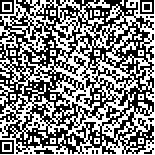| 摘要: |
| 利用胶州湾现场黄色物质吸收系数测量数据,建立了胶州湾水域黄色物质反演的三种统计模式。与Bricaud和Pegau所建立的模式进行比较发现,胶州湾黄色物质均值模式中的S值比Pegau和Bricaud模式中的S值要小近一倍。为了进一步检验所建模式的真实性、可靠性,利用2003年3月12日—4月6日在黄、东海海域(120°30′05″E,35°59′46″N—123°27′04″E,36°00′04″N;122°12′50″E,30°45′40″N—125°00′26″E,30°00′10″N)81个站点的现场数据分别对已建的胶州湾模式和国外相应模式进行了比较、验证。结果表明,用胶州湾400均值模式、440均值模式、Bricaud模式和Pegau模式获得的黄色物质吸收系数计算值与现场同步实测值的误差平均值分别为-14.37%、-35.20%,0.19%和19.95%。对比值进行计算,给出胶州湾400均值模式、440均值模式、Bricaud模式和Pegau模式计算值与实测值的平均比值分别为0.85012、0.63932、0.98180和1.17541。同时,也给出胶州湾海域S值的变化区间为0.00166?S?0.02403。
分析认为,胶州湾400均值模式和Bricaud模式优于胶州湾440均值模式和Pegau模式,在黄、东海海域有较好的适应性。 |
| 关键词: 胶州湾 黄色物质 模式研究 适应性检验 |
| DOI: |
| 分类号: |
| 基金项目:国家863高技术计划资助项目,863AA636010号;国家自然科学基金项目,4978605号 |
|
| INVERSION MODELS FOR ABSORPTION COEFFICIENT OF YELLOW SUBSTANCE IN JIAOZHOU BAY AND APPLICATION TEST IN THE YELLOW SEA AND EASTERN CHINA SEA |
|
WU Yong-Sen1, SUN Pei-Guang1, ZHANG Zhen-Sheng1, ZHANG Shi-Kui1, GAO Xin-Hua1, YE Chen2
|
|
1.First Institute of Oceanography,State Oceanography Administration,Qingdao,266061;2.Qingdao University of Science and Technology,Qingdao,266042
|
| Abstract: |
| Having analyzed the absorption of yellow substance based on in-situ samples in Jiaozhou Bay, near Qingdao of China, three statistical models were used to calculate the absorption coefficients of yellow substance. They are the models of Jiaozhou Bay, Bricaud and Pegau. Among them, the Jiaozhou Bay Model was
improved by the authors on the basis on in-situ observations and includes two sub-models according to different wavelengths for the inversion at 400 and 440nm, named “400” and “440” sub-models. Among the results of these models, the Jiaozhou Bay Model had the smallest S value, which is about one time less than those from other two models.
In order to test the applicability and reliability of a model in Jiaozhou Bay, several models were tested at same time independently with in-situ data measured at 81 spots in the Yellow Sea (120°30′05″E/35°59′46″N–123°27′04″E/36°00′04″N), and Eastern China Sea (122°12′50″E/30°45′40″N–125°00′26″E/30°00′10″N).
The results show that the errors using the models “400” and “440” of Jiaozhou Bay, Bricaud, and Pegau to the in-situ measurements were -14.37%, -35.20%; 0.19% and 19.95%, and the ratios of the calculated values were 0.85012, 0.63932 , 0.98180 and 1.17541, respectively. Additionally, the S values of the Jiaozhou Bay Model was between 0.02403 and 0.00166. Therefore, it is concluded that the “400” sub-model and Bricaud Model are better than the “440” sub-model and Pegau Model. They had a better suitability in the waters of the Yellow Sea and East China Sea. |
| Key words: Jiaozhou Bay, Yellow substance, Model study, Suitability test |
